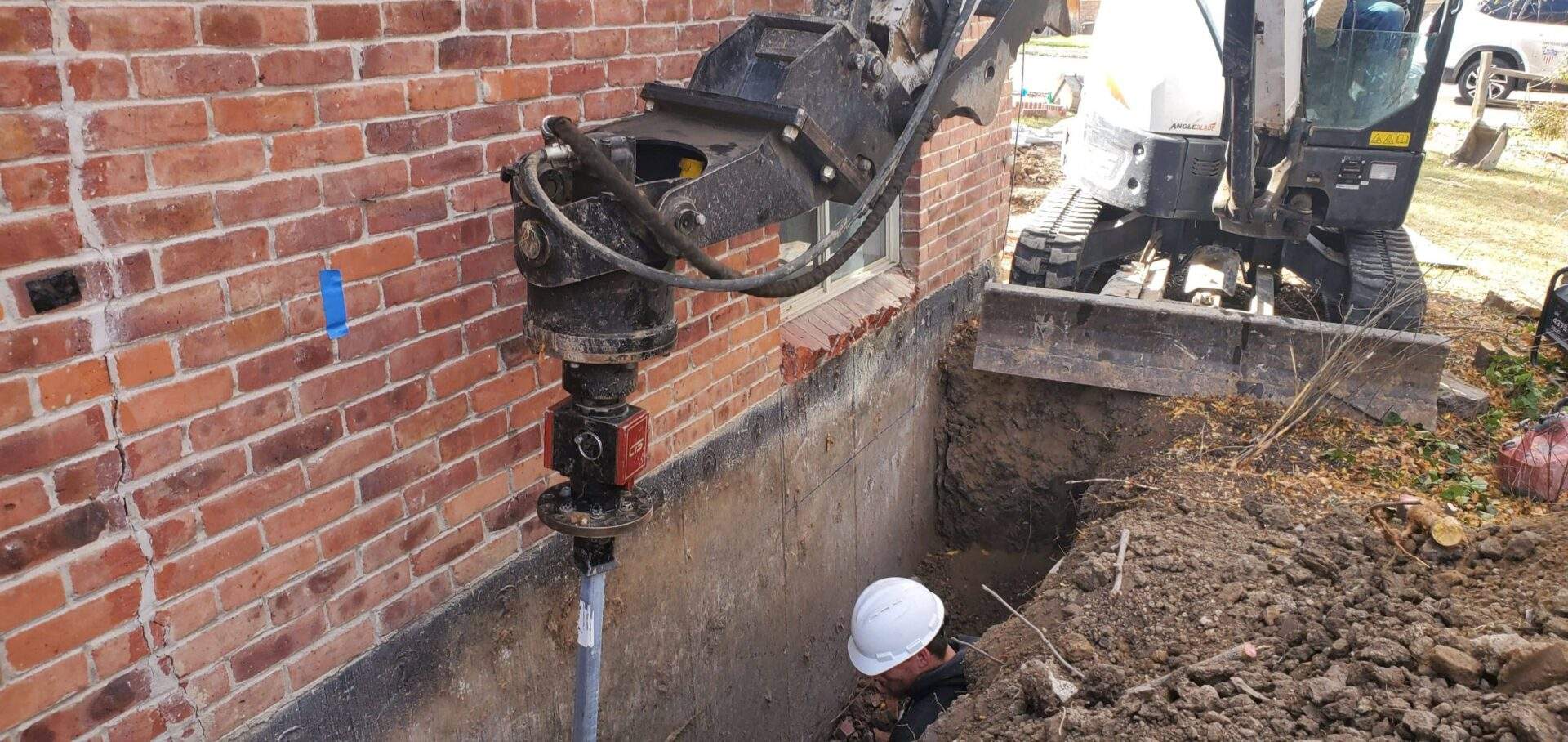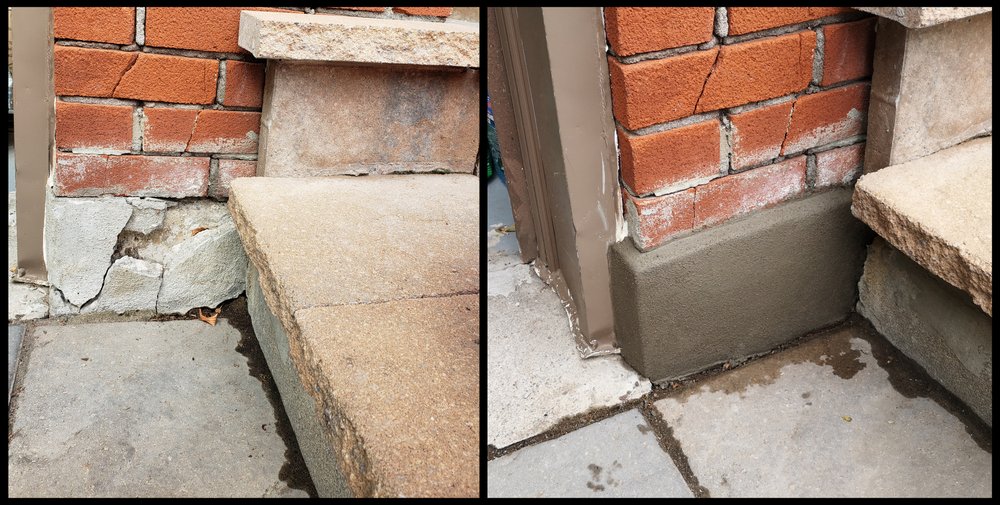FCS Foundation Repair Dallas Historical Home Foundation Repair: Maintaining the Past with Modern Solutions
Wiki Article
Structure Repair Work Techniques: A Thorough Introduction
Structure Repair Techniques: A Thorough ReviewStructure concerns can create significant structural damages to buildings, compromising their security and safety. Understanding structure repair service strategies is critical for designers, service providers, and house owners involved in building and upkeep jobs. This thorough overview offers a detailed evaluation of different methods used to resolve structure issues, guaranteeing a secure and solid foundation for any kind of structure.
The overview covers crucial techniques such as piece jacking, pier and light beam support, basement wall anchoring, soil stabilization, and structure support. Each strategy is explained in-depth, highlighting its purpose, effectiveness, and application. FCS Foundation Repair Dallas concrete foundation services. Furthermore, the review discusses aspects to think about when picking the proper repair service method, such as dirt problems, building kind, and budgetary constraints
Whether you are a house owner looking for to attend to structure concerns or an expert in the building and construction industry, this comprehensive review acts as an useful source, providing necessary understanding and understandings right into structure repair strategies.
Slab Jacking
Slab jacking, typically employed as a reputable and frequently utilized method, elevates sunken concrete slabs by injecting a stabilizing material beneath, properly bring back the foundation to its initial degree. This strategy is commonly utilized in circumstances where the ground has resolved or changed, triggering concrete pieces to sink or become irregular. Piece jacking is a cost-efficient option to totally replacing the concrete, as it addresses the source of the issue and offers a resilient service.
Among the major advantages of piece jacking is its minimally invasive nature. The tiny openings pierced for the shot process can conveniently be covered, leaving no visible indicators of repair. In addition, piece jacking can be finished quickly, typically within a day, minimizing interruption to the homeowner. This strategy appropriates for a large range of concrete frameworks, consisting of driveways, walkways, outdoor patios, and basement floors.
Pier and Beam Of Light Support
Another typically employed method in foundation fixing is pier and beam of light reinforcement, which builds on the previous method of slab jacking to give extra structural support and stability to the foundation. This strategy is especially valuable in locations with weak dirt problems or when the structure has actually suffered significant damages.Pier and beam support involves setting up upright concrete or steel piers below the structure to move the weight of the structure to much deeper, extra stable dirt layers. These piers are strategically placed along the boundary of the structure and at indoor load-bearing walls to equally distribute the tons and stop further settlement.
To strengthen the light beams, additional steel or concrete supports are included in enhance and stabilize the existing beam of lights. This is done by connecting steel braces or beams to the existing beams and protecting them with screws or various other bolts. The support products are chosen based on the particular demands of the structure and the level of the damages.
Pier and beam reinforcement not only offers instant assistance to the structure yet additionally aids to stop future settlement and structural damage. FCS Foundation Repair Dallas Decorative Concrete Services. By rearranging the lots and moving it to stronger soil layers, this technique ensures the long-term security and honesty of the structure
Cellar Wall Anchoring
Basement wall surface anchoring is an essential strategy used in foundation repair to enhance the security and architectural stability of the foundation, particularly in locations prone to soil movement and cellar wall failure. When the dirt around a foundation experiences too much dampness or changes due to geological aspects, it can exert considerable stress on the basement walls, triggering them to fracture, bow, or even collapse. This can result in severe structural issues and endanger the safety of the entire structure.Cellar wall surface securing entails installing specialized supports or helical tiebacks into the ground beside the structure walls. These supports are created to penetrate deep into stable dirt or bedrock, creating a strong link between the foundation and the ground. By distributing the lots of the structure evenly and resisting the lateral forces exerted by the dirt, basement wall surface securing offers added assistance and protects against further movement or damage of the wall surfaces.
There are various kinds of basement wall securing systems offered, including steel wall surface anchors, helical tiebacks, and carbon fiber straps. The option of system depends on aspects such as the intensity of the wall activity, soil problems, find more and the particular needs of the foundation. Specialist foundation fixing professionals evaluate these elements and suggest one of the most ideal anchoring service for every unique circumstance.
Dirt Stablizing
To resolve the challenges of soil movement and make sure the stability of structures, dirt stablizing techniques are used in foundation repair. Soil stablizing describes the procedure of improving the properties of the dirt to improve its load-bearing ability and minimize its sensitivity to activity. There are a number of methods made use of for soil stabilization, each customized to the details qualities of the dirt and the demands of the foundation.
Mechanical stablizing is an additional widely utilized technique that his response entails the physical adjustment of the soil. This technique consists of techniques such as compaction, which raises the thickness of the dirt, and soil substitute, which entails getting rid of weak dirt and replacing it with even more stable materials.
In addition, dirt stabilization might likewise involve using geosynthetic products like geogrids, geocells, or geotextiles. These products are positioned within the dirt to strengthen it and distribute the load more equally, minimizing the risk of settlement or piering a house cost heave.
Structure Foundation
Just how can structure base successfully attend to the obstacles of dirt activity and ensure the security of frameworks? Structure underpinning is a method made use of to enhance and stabilize existing structures that have actually been influenced by soil movement. This approach entails prolonging the deepness or breadth of the structure to a much more steady dirt layer or redistributing the lots across a larger area, therefore boosting its load-bearing capacity.There are several sorts of structure support methods commonly utilized in the market. One technique is mass concrete base, where new concrete is poured below the existing foundation to increase its deepness and security. One more strategy is beam and base support, which includes creating enhanced concrete beam of lights below the existing foundation, transferring the lots to much deeper, more stable dirts.
Helical pile base is also frequently made use of. It includes setting up helical piles right into the ground beneath the structure, which supply extra assistance and stability. These stacks are screwed into the dirt and can be made use of to move the lots of the framework to even more competent dirt layers.
Final Thought
In conclusion, foundation repair work techniques play an important role in maintaining the architectural honesty of structures. Piece jacking, pier and beam of light support, cellar wall anchoring, dirt stabilization, and structure base are all reliable methods used to resolve structure issues. By executing these methods, homeowner can ensure the security and security of their structures for several years ahead.Basement wall surface anchoring is an essential method used in structure repair to boost the stability and architectural stability of the foundation, specifically in locations vulnerable to dirt movement and basement wall surface failure.To attend to the challenges of dirt activity and make certain the security of foundations, dirt stabilization strategies are used in foundation fixing. There are numerous methods used for dirt stablizing, each customized to the particular attributes of the soil and the demands of the foundation.
Structure support is a method utilized to reinforce and stabilize existing structures that have been influenced by dirt motion. Piece jacking, pier and beam reinforcement, basement wall surface anchoring, soil stabilization, and structure support are all efficient methods used to deal with structure concerns.
Report this wiki page